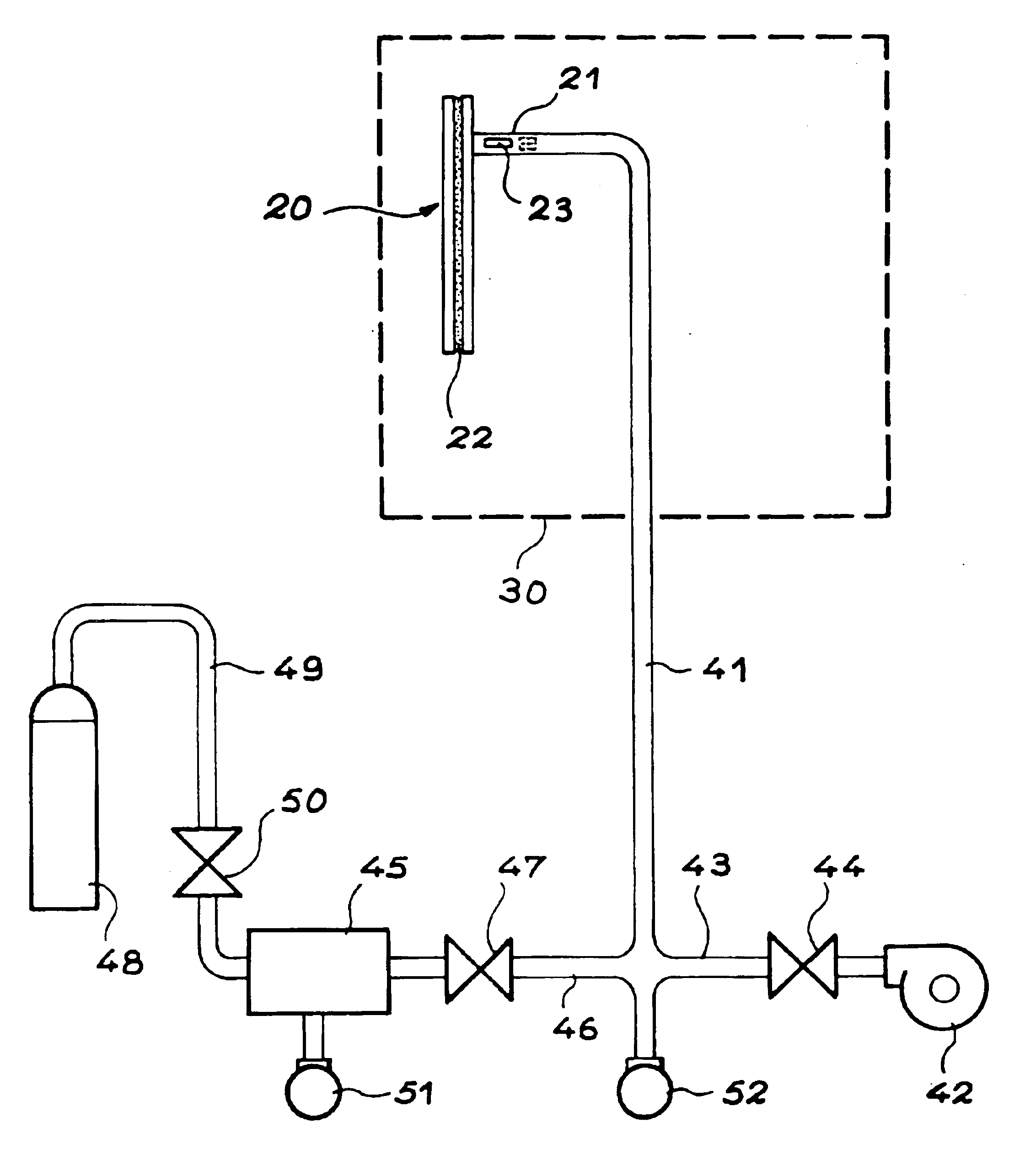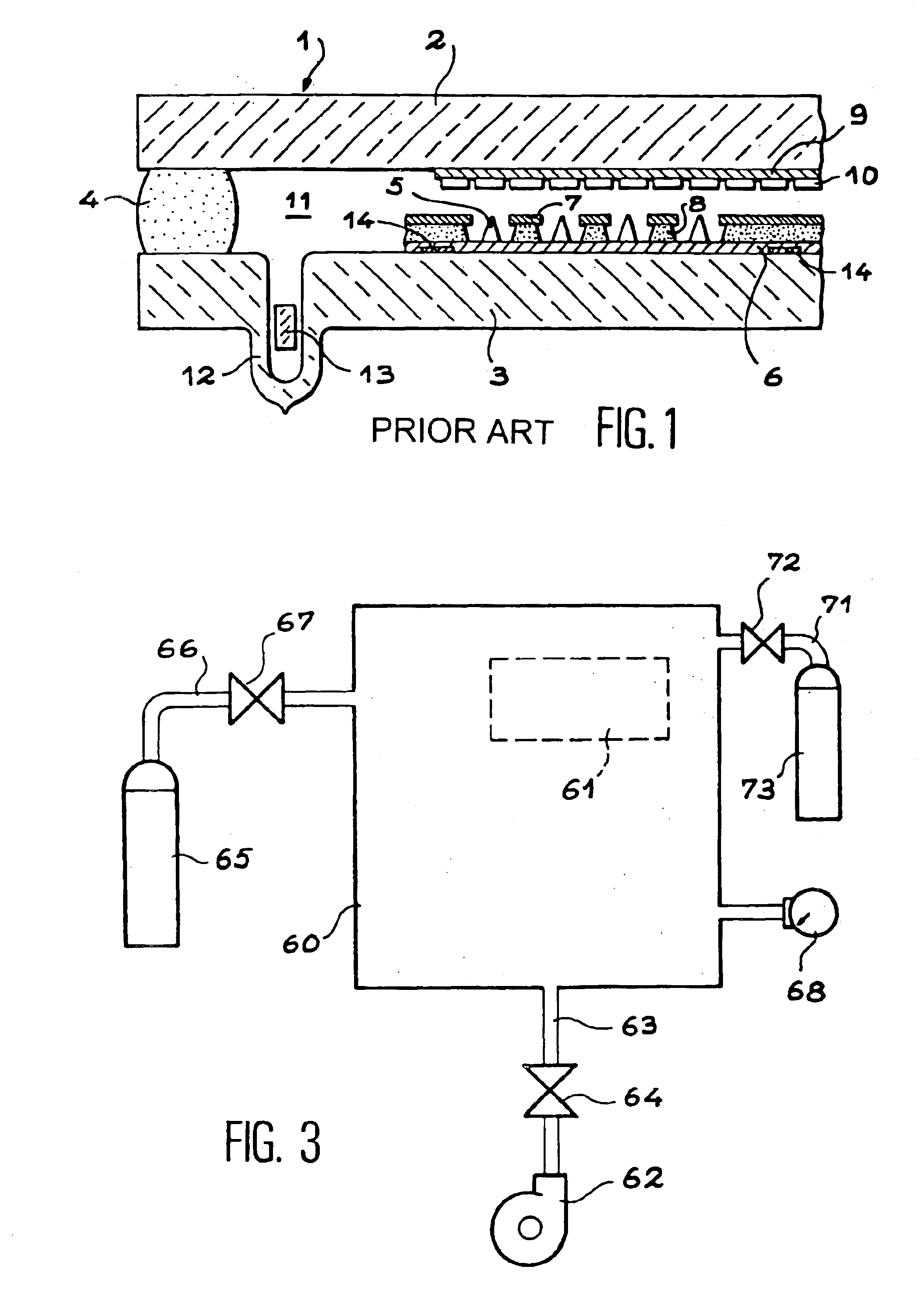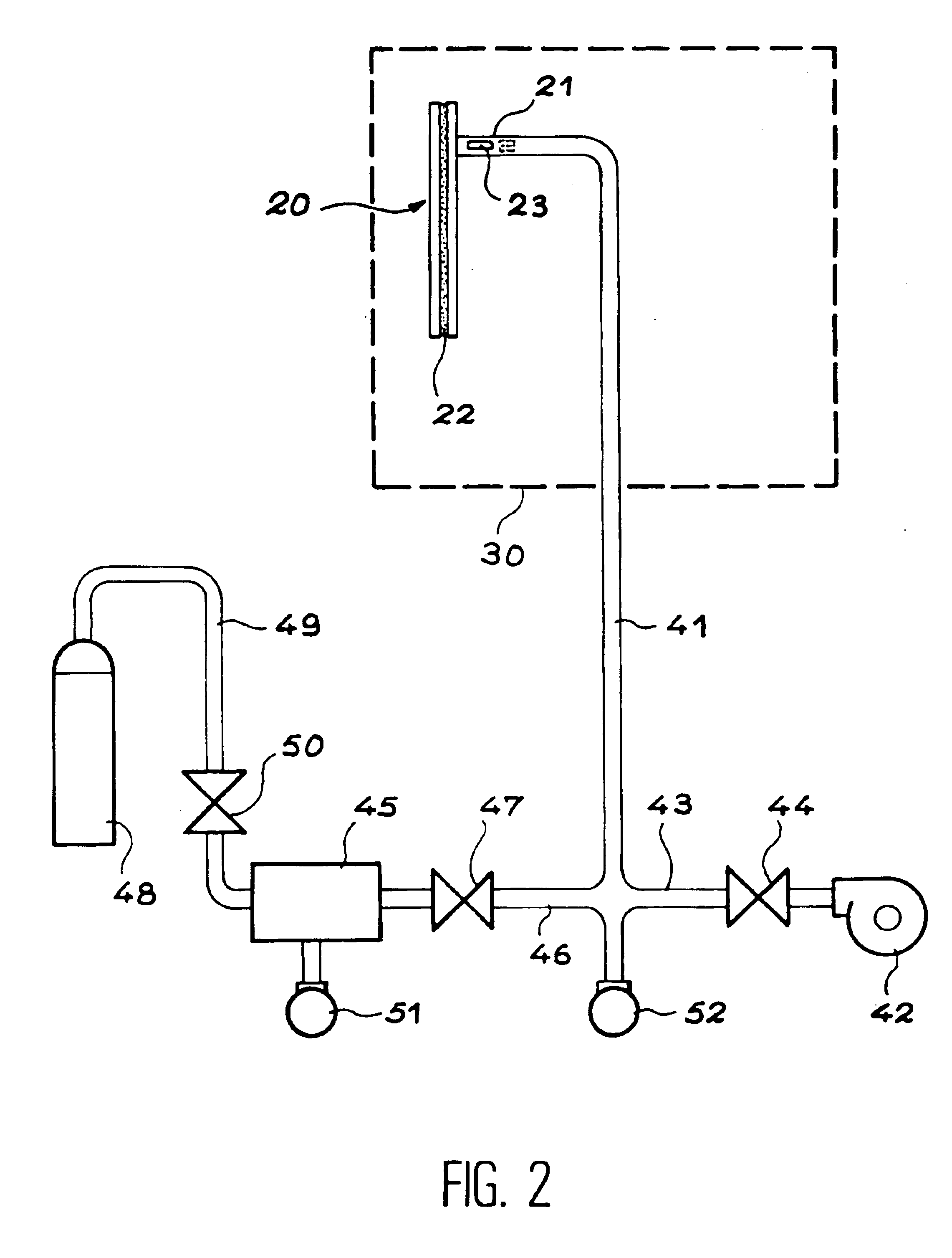Field emission device using a reducing gas and method for making same
a field emission device and reducing gas technology, applied in the direction of discharge tube luminescnet screen, gas filling substance selection, dynamo-electric machines, etc., can solve the problems of high oxidation rate, and short operation life time, and achieve the effects of short operation life, short operation life, and severe constraints in regards to the choice of luminophors
- Summary
- Abstract
- Description
- Claims
- Application Information
AI Technical Summary
Benefits of technology
Problems solved by technology
Method used
Image
Examples
example 1
[0086]A microdot screen 20, of the type shown in FIG. 1, for example 6 inches (15.25 cm) diagonal width, is assembled under vacuum or under a controlled atmosphere by heating to a temperature between 450° C. and 500° C. for around 1 hour. It is equipped with at least one open evacuation exhaust tube 21. The sealing layer 22 for the two strips of the device is made out of low melting point glass, called “frit glass”.
[0087]After sealing and returning to atmospheric pressure, at least one getter 23, for example an ST 171 type getter, is introduced into the interior of the exhaust tube 21.
[0088]The device 20 is then placed in the zone 30 of the apparatus shown in FIG. 2, which allows it to be heated. The exhaust tube 21 is connected to a pipe 41, which allows it to be connected up to a turbo-molecular type vacuum pump 42 via a pipe 43, fitted with a valve 44 on one side and at the exit orifice by a gas reservoir 45, of known volume (for example 1.7 liters), via a pipe 46, fitted with a ...
example 2
[0095]According to a variation of example 1, NH3 may be introduced into the screen under dynamic conditions.
[0096]In order to do this, once the getter activation phase is finished, a partial pressure of NH3 is adjusted via valve 50, with valves 44 and 47 open.
[0097]The partial pressure of NH3 is preferably between 10−8 and 10−5 mbar. After a period of dynamic scanning lasting several minutes to several tens of minutes, the screen is isolated from the apparatus by sealing off the exhaust tube.
example 3
[0098]According to another implementation method, the screen may be assembled in an integral manner, in other words, the screen is de-gassed then sealed under vacuum or under a controlled atmosphere. The process is such that, after sealing, it remains under vacuum, or under a controlled atmosphere, unlike the previous case (examples 1 and 2) in which, after sealing, the screen is returned to atmospheric pressure and then re-evacuated and heated.
[0099]The following procedure may then be followed.
[0100]The various parts of the screen (strip bearing the cathode, strip bearing the anode, frit glass, getters, etc.) are placed in position under vacuum then heated to a temperature of around 300° C. to 450° C. for one or several hours. The getters may be placed in position either within the interior of the screen or in an external area such as a sealed off exhaust tube or getter box. During the heating stage, the anode may be laid flat against the cathode or maintained at a certain distance...
PUM
 Login to View More
Login to View More Abstract
Description
Claims
Application Information
 Login to View More
Login to View More - R&D
- Intellectual Property
- Life Sciences
- Materials
- Tech Scout
- Unparalleled Data Quality
- Higher Quality Content
- 60% Fewer Hallucinations
Browse by: Latest US Patents, China's latest patents, Technical Efficacy Thesaurus, Application Domain, Technology Topic, Popular Technical Reports.
© 2025 PatSnap. All rights reserved.Legal|Privacy policy|Modern Slavery Act Transparency Statement|Sitemap|About US| Contact US: help@patsnap.com



